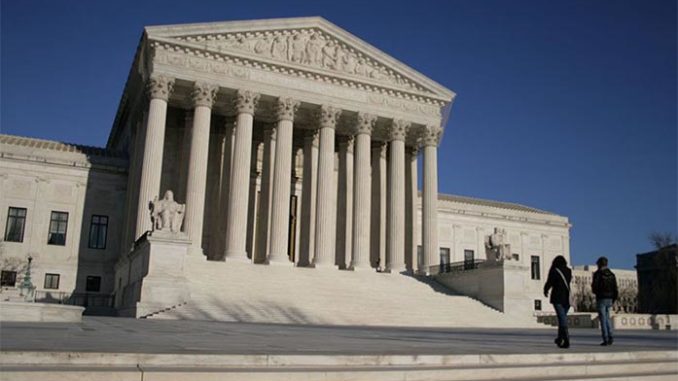
WASHINGTON – Chief Justice John Roberts had pointed questions for attorneys arguing on behalf of an Arizona woman whose fight to regain some of her ex-husband’s pension payments landed before the U.S. Supreme Court Monday.
John and Sandra Howell agreed to split his Air Force pension as part of their 1991 divorce, but when Mr. Howell successfully applied for disability payments in 2005 it cut his monthly pension – and hers – by 20 percent.
She went to court, and the Arizona Supreme Court ruled in 2015 that Mrs. Howell is still entitled to the full $625 a month that she expected under their agreement.
An attorney for Mr. Howell said that violates a previous ruling by the U.S. Supreme Court that said federal law allows division of pensions, but that state courts cannot divide a veteran’s disability pay between divorced spouses.
The attorney, Adam Unikowsky, also argued that it was never the intent of Congress for disability benefits to go to anyone other than the veteran living with the disability.
“Our interpretation just makes sense,” Unikowsky told the justices.
But an attorney for Mrs. Howell said she does not need to receive a share of her ex-husband’s disability. Charles Wirken told the justices that the money his client lost could be repaid out of other assets of Mr. Howell’s – the same argument that an attorney for the U.S. Solicitor General made to the court Monday.
That appeared to carry little weight with Roberts, who called it “unrealistic” to ask for reimbursement from Mr. Howell and then say that the payment is not related to his disability benefits, even if Mrs. Howell is not explicitly asking for money from that bucket.
“It seems to me that … you’re basically saying there’s no real substance to this law,” Roberts said. “All this court has to do is find some charade to get to the same result.”
Roberts said that’s the sort of reasoning “that gives the law a bad name,” eliciting laughter from the courtroom.
But other justices pointed to Mr. Howell’s “unilateral decision” to apply for disability benefits, which are not taxed, reducing his taxable pension payments by 20 percent in the process. That decision translated to a $125 monthly reduction for Mrs. Howell.
-Cronkite News video by Anthony Marroquin
Justice Ruth Bader Ginsburg said that the reimbursement recommended by the Arizona Supreme Court would merely be returning to Mrs. Howell property that already belonged to her. Justice Sonia Sotomayor said that “she (Mrs. Howell) planned her life around that income.”
Both justices asked whether Mrs. Howell would be able to go back to court and get a different settlement if, for example, she needed alimony or spousal support.
But Unikowsky said that Mrs. Howell receives a percentage of Mr. Howell’s pension based on the concept of property division, which the state of Arizona defines as “equitable division” that is fair, but not always equal.
Unikowsky said the 1991 agreement was that Mrs. Howell would receive “half” of her ex-husband’s pension. The agreement specified no dollar amount, and legally Mrs. Howell cannot receive part of Mr. Howell’s disability income, he said.
Unikowsky declined comment after the hearing. But Wirken repeated his argument that Mrs. Howell’s portion of her ex-husband’s pension is her “vested property” and that she is entitled to it. That is a decision state courts can make, he said.
“The major point that I wanted to make was that Congress authorizes the states to divide retirement according to state law, and once they make that division, then each of the parties has a vested interest in the division of property,” said Wirken, adding that he thinks the hearing went well.
The court is not likely to rule in the case until late spring or early summer.
